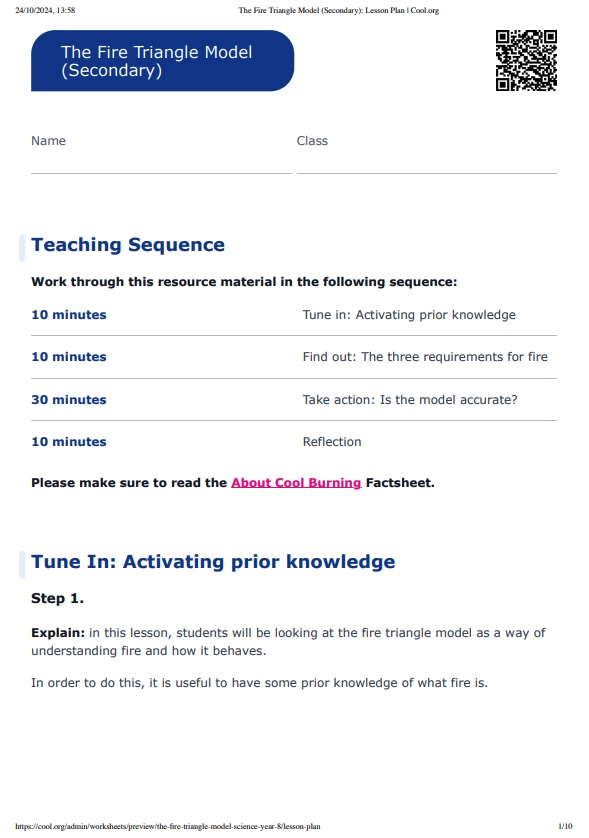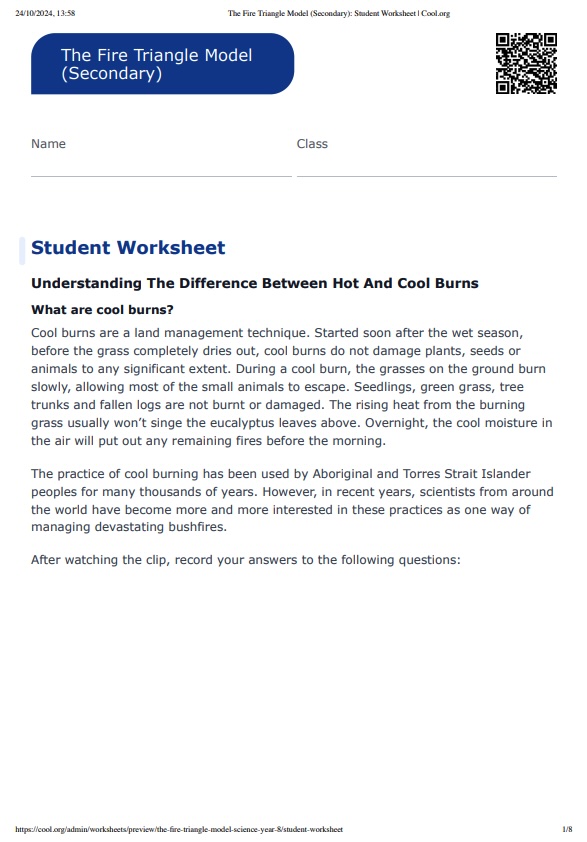Lesson summary
Students conduct an experiment to demonstrate the chemical reaction involved in a fire burning, and investigate how this impacts the practice of cool burning.
Learning intentions:
Students will...
- understand the three conditions required to start and sustain fires
- understand the differences between hot and cool burning.
Success criteria:
Students can...
- conduct experiments that demonstrate the importance of a number of variables in sustaining a fire.
Partner acknowledgement
Cool.org would like to acknowledge the support of the North Australian Indigenous Land and Sea Management Alliance Ltd (NAILSMA) in creating these resources.
Lesson guides and printables
Curriculum links
Select your curriculum from the options below.
Lesson details
Curriculum mapping
Syllabus Outcomes: AC9S8U07
Cross Curriculum Priority: Sustainability, Aboriginal and Torres Strait Islander Histories and Cultures.
Relevant parts of Year 8 achievement standards: Students compare different forms of energy and represent transfer and transformation of energy in simple systems. They classify and represent different types of matter and distinguish between physical and chemical change.
Resources required
- Device capable of presenting a website to the class
- Fire Factsheet
- Fire Triangle Image
- Lab Safety Rules
- Materials for experiment - candles, matches, taper, pump water sprayer and Pyrex beakers
- Student Worksheet - one copy per student.
Skills
This lesson is designed to build students’ competencies in the following skills:
- communication
- critical thinking
- cultural understanding
- collaboration
Additional info
Level of teacher scaffolding: High - review students’ knowledge and identify their misconceptions, assist students with simple chemistry concepts, assess student outcomes.
This is an original Cool+ lesson.



Welcome back!
Don't have an account yet?
Log in with:
Create your free Cool.org account.
Many of our resources are free, with an option to upgrade to Cool+ for premium content.
Already have an account?
Sign up with:
By signing up you accept Cool.org's Terms and Conditions(Opens in new tab) and Privacy Policy(Opens in new tab).